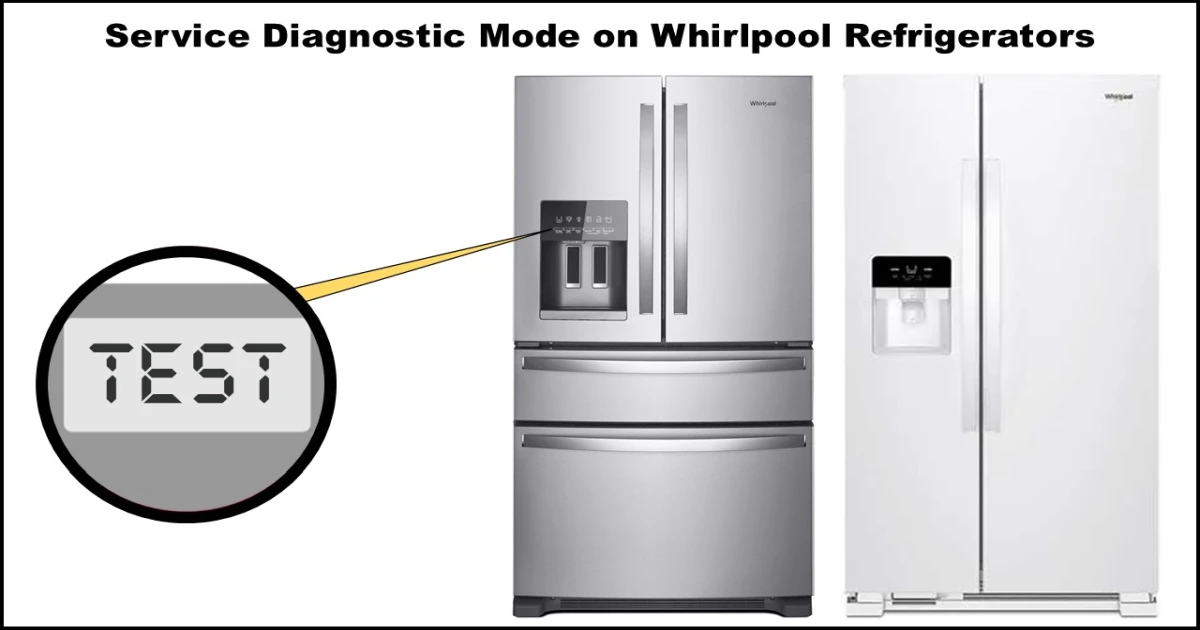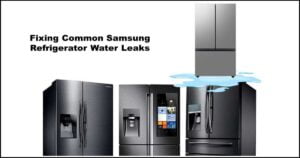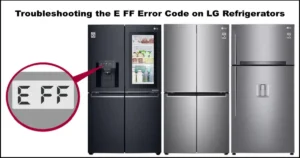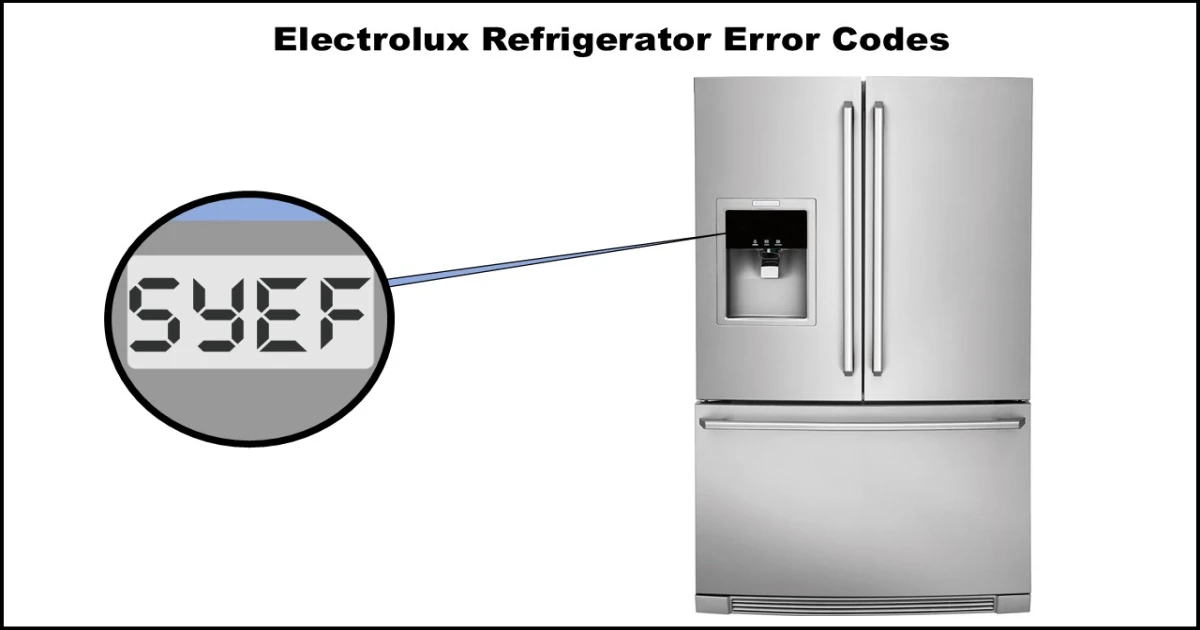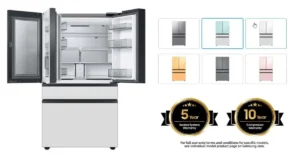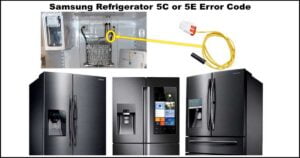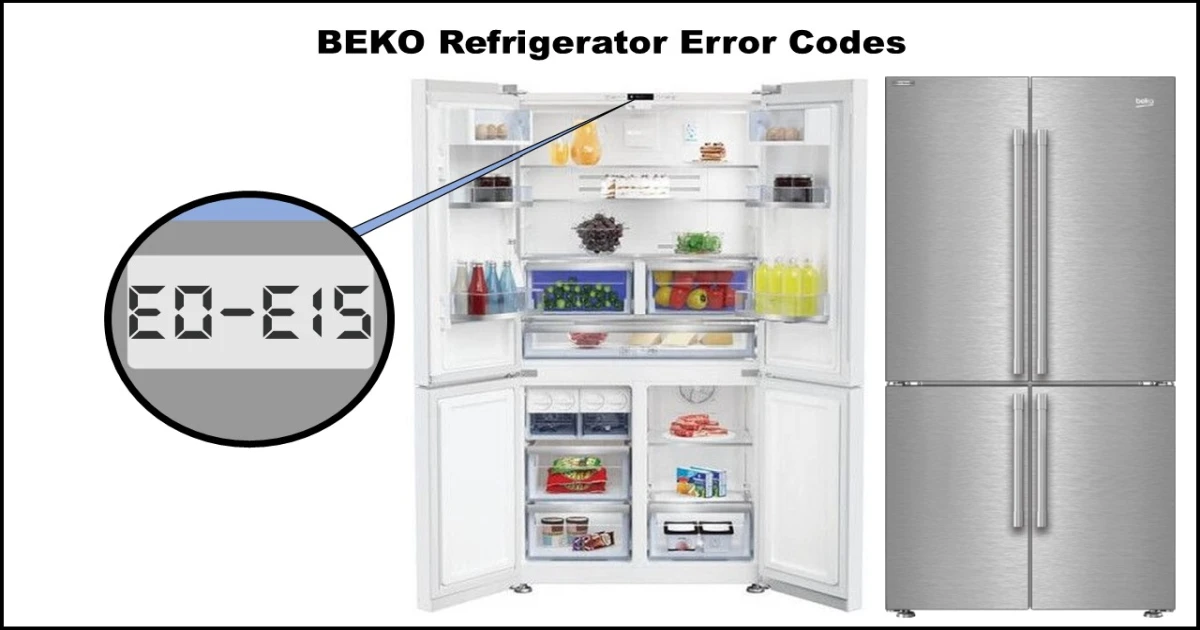The compressor is the heart of any refrigeration system, whether it’s a commercial unit or a domestic appliance. When it fails, selecting the correct replacement is crucial for restoring efficient and reliable cooling. But with countless models and specifications, how do you ensure you pick the right one? Making the wrong choice can lead to poor performance, high energy consumption, or even premature failure of the new component.
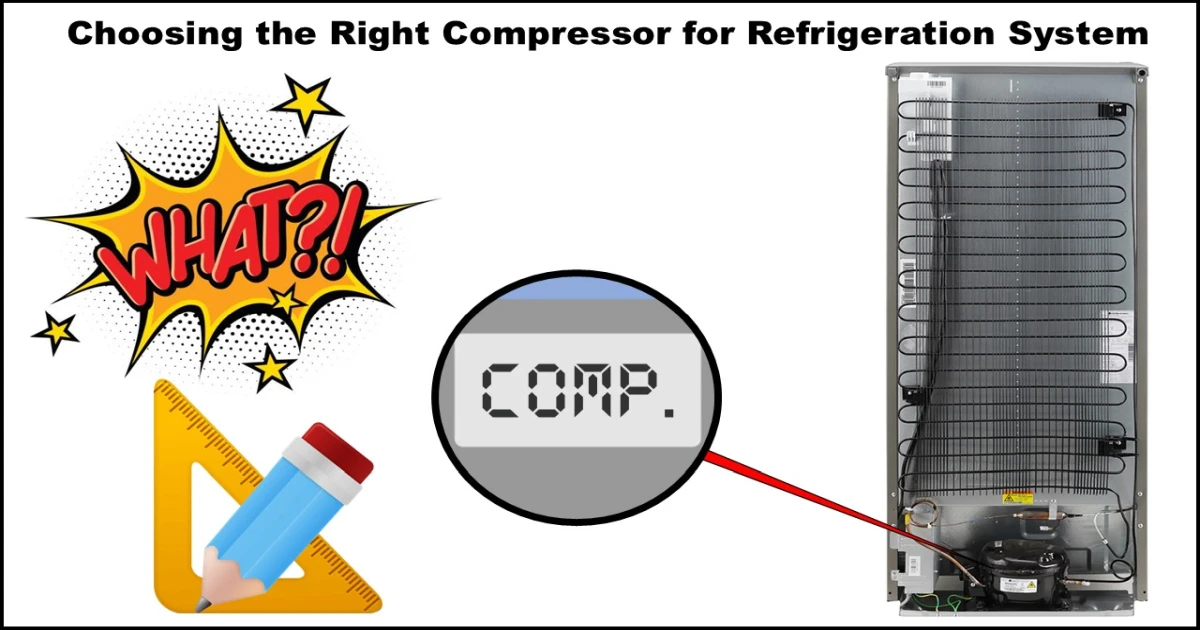
This guide will walk you through the essential steps for sizing and selecting or choosing the right compressor for refrigeration system. We’ll cover how to decode compressor information, understand key specifications, determine cooling capacity, and confidently choose a suitable replacement, even if the original model isn’t available.
Choosing the Right Compressor for Refrigeration System
1. Decoding Compressor Information: Labels vs. Model Numbers
Think of the information available about a compressor in two parts: the quick-reference label and the detailed specifications linked to the model number.
- Reading the Compressor Label: The label attached directly to the compressor is like its ID card. It typically provides essential at-a-glance information:
- Manufacturer: Brand logo (e.g., Embraco, Tecumseh).
- Model Number: The key identifier for finding detailed specs.
- Voltage and Frequency: Electrical requirements (e.g., 220-240V, 50Hz).
- Refrigerant Type: The specific refrigerant the compressor is designed for (e.g., R134a, R600a, R290). Note: While “Freon” is a common term, it’s a brand name. Always match the specific refrigerant type.
- Safety Approvals: Marks indicating compliance with regional electrical safety standards.
- Production Date: Useful for tracking age or warranty.
- Suction Line Indicator: Often an arrow showing the correct orientation for the suction tube, vital for efficiency.
- Unlocking Details with the Model Number: The model number is more than just an identifier; it’s often a code (nomenclature) that reveals deeper details about the compressor’s design and capabilities. While deciphering the full code requires manufacturer-specific charts, it typically indicates:
- Compressor family or series.
- Technology generation.
- Displacement or capacity range.
- Intended refrigerant type.
- Efficiency level.
- Application type (LBP, MBP, HBP).
- Motor and start component type.
Example: For an Embraco EM3Y60HLP:
- EM3: Family/Generation
- Y: Efficiency Level
- 60: Capacity Code
- H: Refrigerant Type (R600a)
- L: Application (LBP – Low Back Pressure)
- P: Start Device Type
Understanding this structure helps significantly when searching for datasheets or compatible alternatives.
2. Key Specifications for Compressor Selection
When replacing a compressor, you need to match several critical specifications to ensure compatibility and performance:
- Cooling Capacity: The amount of heat the compressor can remove, usually measured in BTU/h (British Thermal Units per hour), Watts (W), or Kcal/h (Kilocalories per hour). This MUST be matched closely under the correct rating conditions (see Section 4).
- Refrigerant Type: The compressor must be designed for the specific refrigerant used in the system (e.g., R134a, R600a, R404A). Using the wrong type can cause system failure or damage.
- Voltage and Frequency: Must match the power supply available (e.g., 115V/60Hz, 220-240V/50Hz).
- Application (Back Pressure): This defines the evaporating temperature range the compressor is designed for:
- LBP (Low Back Pressure): For low evaporating temperatures (typically below -20°C / -4°F). Used in freezers, domestic refrigerators.
- MBP (Medium Back Pressure): For medium evaporating temperatures (typically -20°C to 0°C / -4°F to 32°F). Used in beverage coolers, fresh food cabinets.
- HBP (High Back Pressure): For high evaporating temperatures (typically above -15°C / 5°F). Used in dehumidifiers, ice makers.
- L/MBP: Models designed to operate across both low and medium ranges.
- Compressor Type:
- Fixed Speed (On/Off): Traditional compressors that run at a single speed.
- Variable Speed (Inverter): Modern compressors that can adjust their speed for higher efficiency and better temperature control. These are generally not interchangeable with fixed-speed models without system modifications.
- Starting Torque: Indicates the motor’s ability to start under pressure:
- LST (Low Starting Torque): Usually requires a capillary tube or other system where pressures equalize on shutdown.
- HST (High Starting Torque): Can start against higher pressure differences, often used with expansion valves.
- Electrical Motor & Start Components: Different motor types require specific start relays, run capacitors, or start capacitors.
- RSIR: Resistance Start Inductive Run
- CSIR: Capacitive Start Inductive Run
- RSCR: Resistance Start Capacitive Run
- PSC: Permanent Split Capacitor
- CSR / CSCR: Capacitive Start and Run / Capacitor Start Capacitor Run
- Ensure the replacement compressor’s electrical setup is compatible or that you use the correct components specified for it.
Compressor Application Ranges:
| Compressor Type | Description | Typical Applications | Evaporating Temperature Range |
|---|---|---|---|
| LBP | Low Evaporating Temperature | Freezers (Chest/Upright), Domestic Refrigerators, Frozen Food Cabinets/Displays | Below -20°C (-4°F) |
| L/MBP | Low/Medium Evaporating Temperature | Domestic Refrigerators, Ice Cream Freezers, Bottle Coolers, Professional Kitchen Coolers | -35°C to 0°C (-31°F to 32°F) |
| MBP | Medium Evaporating Temperature | Drink Dispensers, Bottle Coolers, Fresh Food Cabinets, Ice Makers | Above -20°C (-4°F) |
| HBP | High Evaporating Temperature | Dehumidifiers, Dryers, Drink Coolers, Ice Makers, Fresh Food Cabinets | Above -15°C (5°F) |
3. How to Obtain Compressor Specifications: Finding the Datasheet
Once you have the model number from the old compressor (or the equipment specifications), you need the detailed datasheet:
- Search Online: The most effective method. Use a search engine like Google. Search for the full compressor model number followed by “datasheet” or “specifications” (e.g., “Embraco EM3Y60HLP datasheet”).
- Manufacturer Websites: Go directly to the compressor manufacturer’s website (e.g., Embraco, Tecumseh, Secop, Danfoss). They usually have product databases or literature sections where you can search by model number.
- Reputable Supplier Websites: Major refrigeration parts suppliers often provide datasheets for the compressors they sell.
The datasheet is the definitive source for all specifications, including cooling capacity under standard test conditions.
4. Understanding and Comparing Cooling Capacity
Cooling capacity isn’t a single fixed value; it changes significantly with the operating conditions (specifically evaporating and condensing temperatures). Therefore, manufacturers test and rate compressors under standardized conditions.
- The Importance of Standard Conditions: To compare compressors accurately, you MUST use capacity ratings measured under the same standard test conditions.
- ASHRAE Standards: A widely used standard, particularly in North America and many other regions. ASHRAE specifies different test points based on the application:
- ASHRAE LBP: Evaporating Temperature = -23.3°C (-10°F)
- ASHRAE MBP/HBP: Evaporating Temperature = +7.2°C (+45°F)
- Note: Other standards like EN 12900 (common in Europe) use different test points. Always check which standard is being used in the datasheet.
Example: Looking at the datasheet for the Embraco EM3Y60HLP (an LBP compressor), we find its cooling capacity rated under ASHRAE LBP conditions is 190 Watts or 648 BTU/h.
5. Converting Cooling Capacity Units
Datasheets or market requirements might use different units (Watts, BTU/h, Kcal/h). Use these conversion factors when needed:
| Conversion | Equation |
|---|---|
| Kcal/h to Watt | W=1.163×Kcal/h |
| Watt to Kcal/h | Kcal/h=0.86×W |
| Btu/h to Watt | W=0.2928×Btu/h |
| Watt to Btu/h | Btu/h=3.414×W |
| Kcal/h to Btu/h | Btu/h=3.96832×Kcal/h |
| Btu/h to Kcal/h | Kcal/h=0.252×Btu/h |
| Ton of Refrigeration to Btu/h | Btu/h=TR×12000 |
| Btu/h to Ton of Refrigeration | TR=Btu/h/12000 |
| Ton of Refrigeration to Watt | W=TR×3516.8 |
| Watt to Ton of Refrigeration | TR=W/3516.8 |
| Watt to HP (Approximate) | HP≈Watt/746 (Caution: Horsepower is a measure of motor power input, not cooling output. Avoid using HP for selecting refrigeration compressors unless absolutely necessary and you understand the context). |
Calculation Example:
If a catalog lists the EM3Y60HLP capacity as 648 BTU/h (ASHRAE LBP) and you need Watts:
- W=0.2928×Btu/h
- W=0.2928×648≈189.7W (Matches the 190W rating)
If you need Kcal/h from the Watt value:
- Kcal/h=0.86×W
- Kcal/h=0.86×190≈163.4Kcal/h
6. Tips for Finding a Suitable Replacement Compressor
Finding an identical replacement isn’t always possible. Here’s how to select a compatible alternative:
- Prioritize Key Specs: The replacement MUST match:
- Refrigerant Type
- Voltage & Frequency
- Application (LBP, MBP, HBP)
- Match Cooling Capacity: Find a compressor with a cooling capacity as close as possible (ideally within +/- 5-10%) to the original, measured under the same standard conditions (e.g., ASHRAE LBP).
- Consider Physical Dimensions & Connections: Ensure the new compressor will physically fit and that the suction, discharge, and process tube locations/sizes are compatible or adaptable.
- Check Electrical Compatibility: Verify the motor type (e.g., RSIR, CSIR) and ensure you have the correct start relay, overload protector, and capacitors (if required) specified for the new compressor.
- Use Cross-Reference Tools: Some manufacturers and suppliers offer online cross-reference tools, but always double-check the full datasheets of suggested replacements.
- Consult Datasheets: Never rely solely on cross-references or basic labels. Always compare the full datasheets of the original (if available) and potential replacements.
Searching online effectively (using model numbers, specs, and terms like “replacement” or “alternative”) is a skill that improves with practice.
Conclusion:
Selecting the correct replacement compressor is vital for the performance, efficiency, and longevity of any refrigeration system. By carefully reading the information on the existing compressor, understanding the key specifications from the datasheet (especially refrigerant type, application, voltage, and cooling capacity under standard conditions), and knowing how to search for and evaluate alternatives, you can confidently choose the right component for the job. Taking the time to match specifications accurately will save time, prevent callbacks, and ensure a satisfied customer or a properly functioning appliance.
